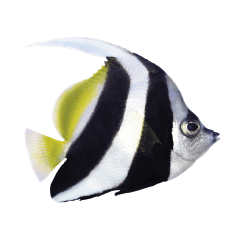Project News ·
Community at the Forefront of Reef Protection
Blending Traditional Owner knowledge with cutting-edge science and land management has achieved transformative outcomes across Cape York

The $8.5million Eastern Cape York Water Quality program, supported through the partnership between the Australian Government's Reef Trust and the Great Barrier Reed Foundation, targeted sediment reduction across priority catchments feeding into the Reef.
At its heart, community-led conservation, integrated fire management, and a deep commitment to Traditional Owner leadership.

Water quality monitoring on the Starke River. Image Cape York Water Partnerships
Protecting the Reef from the Source
Spanning 43,000 square kilometres, the eastern Cape York catchments are the largest to drain into the inshore Great Barrier Reef. Once considered largely undisturbed, new data collected through this program reveals these catchments may be contributing significantly more sediment to the Reef than previously thought, up to five times more in some cases.
"Thanks to a sophisticated monitoring program, we're seeing a more accurate picture of how these landscapes influence Reef health," said Greg Oliver, Program Manager Water Quality, Great Barrier Reef Foundation.

Yuku Baja Muliku ranger undertaking water quality monitoring. Image Yuku Baja Muliku
Tackling Key Threats - Roads and Erosion
Projects tackled sediment at the source, focusing on erosion from unsealed roads, tracks, fire breaks, gullies, and uncontrolled fires. Over 100 erosion control actions were delivered, including road upgrades, gully remediation, and early-season cultural burns.
Best Management Practice guidelines were developed and trialed for both Council roads as well as primitive roads and fire breaks, empowering land managers to apply erosion control methods tailored to Cape York’s unique environment.
Key interventions included:
- six gullies remediated, reducing over 1000 tonnes of fine sediment per year
4000km of primitive tracks mapped, with 625 priority erosion sites identified
- Council road drainage trials that tested more effective, sediment-saving maintenance methods

Installing fire breaks as part of the fire management program. Image South Cape York Catchments Inc
Cultural fire management
Fire management, led by Traditional Owner rangers and guided by Elders, is supporting erosion control along remote tracks, ensuring that traditional knowledge and cultural practices remain central to caring for Country.
An early dry season fire management regime was implemented to prevent damaging hot late-season wildfires and deliver a balance between cultural heritage protection, habitat protection, and asset protection. The coordinated early burning program achieved a notable decrease in wildfire damage.

Preparing incendiary machine for strategic burning. Image South Cape York Catchments Inc
Traditional Owner Leadership
At the core of the program was the empowerment of Traditional Owner organisations. A total of 22 Traditional Owners from seven organisations were trained and employed in fire management and erosion control, including the newly established Juunjuwarra Rangers.
Rangers from Yuku Baja Muliku mapped and treated erosion hotspots along fire breaks and access tracks, combining traditional knowledge with modern conservation methods. The program has facilitated new collaborations between Traditional Owners and landholders who had not worked together in decades.
“The Yuku-Baja-Muliku Rangers are looking forward to the future with a stronger sense of understanding how erosion control and fire management can impact the health of their Country and using the knowledge that they have acquired to better protect and care for Country,” reported Yuku-Baja-Mulik Project Manager Jasmin Ford.

Early season cool burn. Image Yuku Baja Muliku
Unprecedented Data and Scientific Insights
The program filled critical knowledge gaps by expanding water quality monitoring from two to seven rivers, establishing 26 new monitoring sites, and tracking sediment loads during extreme weather events such as Cyclone Jasper.
The work has redefined Reef catchment modelling and will directly inform updates to the Reef 2050 Water Quality Improvement Plan.
Additionally, for the first time in decades, seagrass mapping was conducted across the region, laying the groundwork for potential future blue carbon market opportunities.

Yuku-Baja-Mulik rangers mapping and monitoring seagrass. Image Yuku-Baja-Mulik
Collaborative Conservation
With over 29 organisations and 33 landholders including 11 Indigenous entities engaged, the program demonstrates how locally led, science-informed collaboration can drive meaningful environmental and social change.
Key outcomes include:
Transformation of local organisations from under-resourced to fully funded ranger groups
Skills development that enabled Traditional Owners to lead environmental projects
Stronger cross-cultural relationships and enduring partnerships
A Monitoring and Evaluation plan developed with delivery partners ensured outcomes were tracked and knowledge shared, culminating in a synthesis workshop to celebrate achievements and shape future directions.

Yuku-Baja-Mulik junior rangers erosion activity. Image Yuku-Baja-Mulik
A Lasting Legacy
Beyond immediate sediment reductions and restored landscapes, the program leaves behind a suite of tools, guidelines, and partnerships that will continue to benefit Cape York and the Reef for years to come.
"The legacy of this work is not just in tonnes of sediment stopped at the source, it's in the skills passed on, the communities strengthened, the Country cared for, and the outcomes for the Reef," Greg said.

Practical fire training workshop increased local skills and capacity to deliver early dry season fire management regime. Image South Cape York Catchments
Cover image: Juunjuwarra Ranger Jarvis Darkan. Image South Cape York Catchments
#Related

Project News ·
A nature-based solution for a healthier Reef

Project News ·


